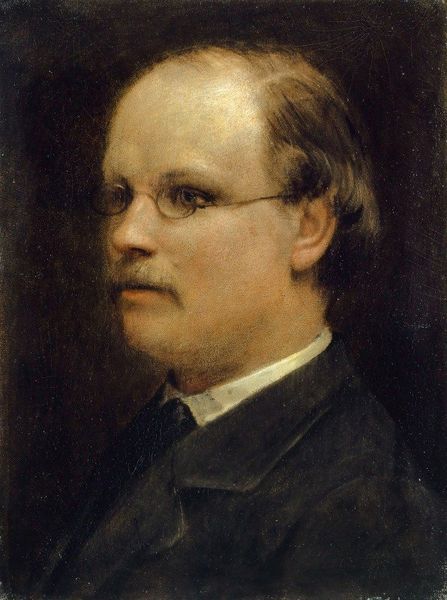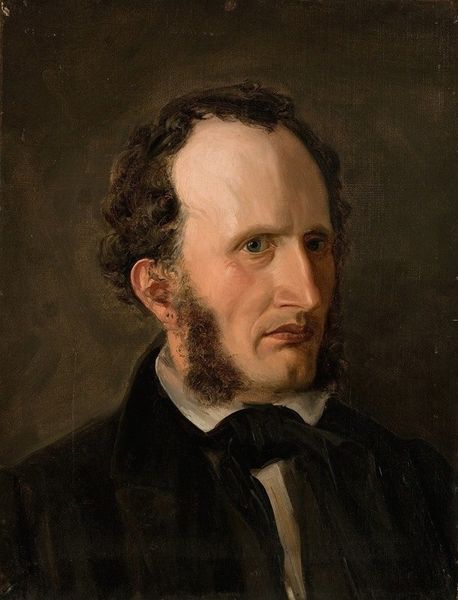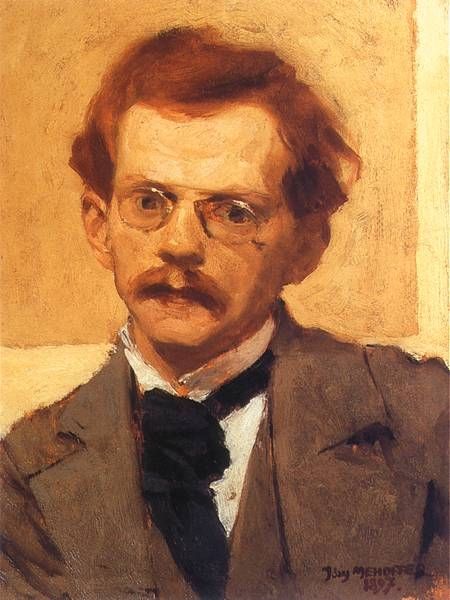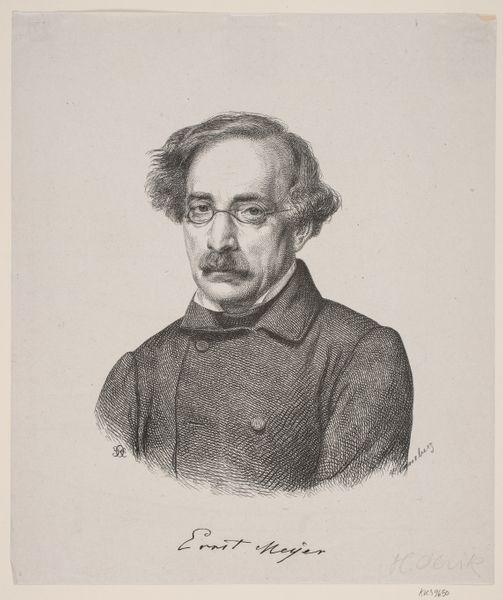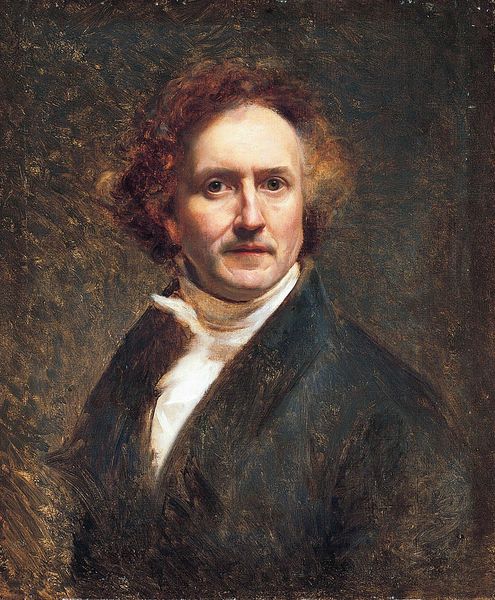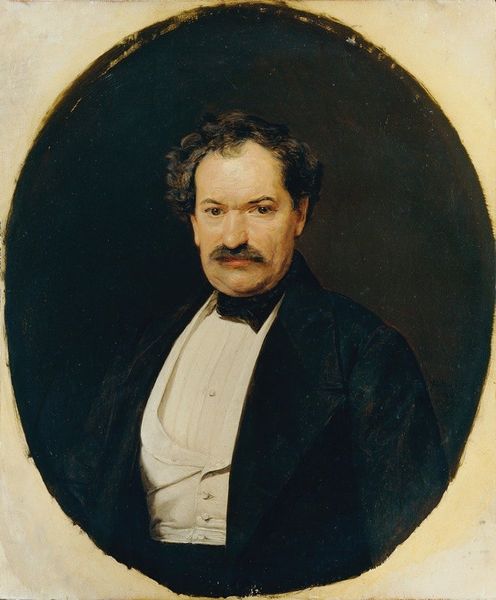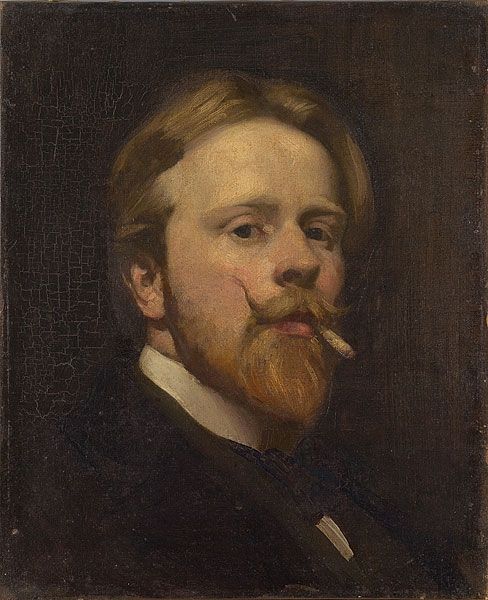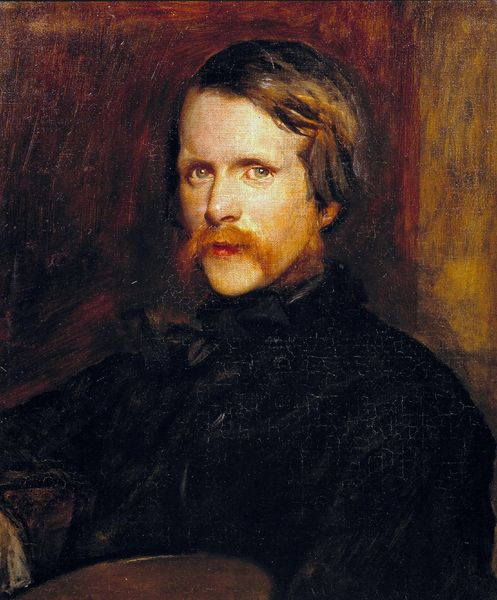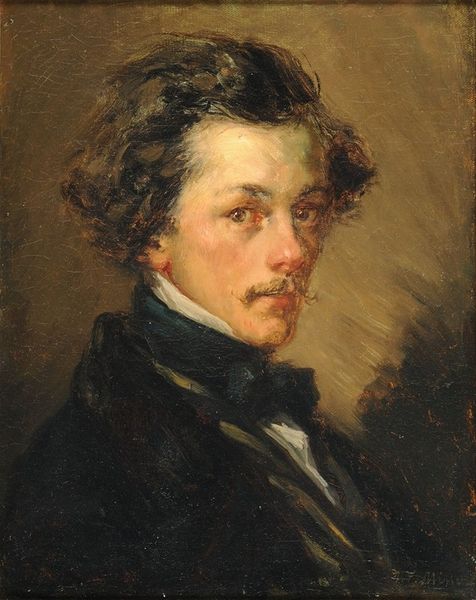
oil-paint
#
portrait
#
figurative
#
oil-paint
#
portrait reference
#
portrait head and shoulder
#
romanticism
#
animal portrait
#
animal drawing portrait
#
portrait drawing
#
facial study
#
facial portrait
#
academic-art
#
portrait art
#
fine art portrait
#
digital portrait
Copyright: Public Domain: Artvee
Curator: Here we have an intriguing oil-on-canvas work from around 1830 entitled "Unbekannter Mann," or "Unknown Man," by Friedrich von Amerling. What’s your initial impression? Editor: Visually, it strikes me as a study in controlled chaos. The textures, especially in the hair, seem almost aggressively impasto against the relatively smooth skin tones. The light creates a clear focal point. Curator: Indeed. Amerling was a prominent portraitist, navigating the evolving landscape of Romanticism and the rise of the Biedermeier period. This portrait encapsulates that transitional moment—caught between idealized representations and an emerging interest in bourgeois individuality. He looks so serious. Editor: There's a captivating contrast between the man's face, framed by these somewhat wild curls and imposing mustache, and the severe, dark clothing he sports, a symphony of shape and darkness. Curator: I’m drawn to ponder who this 'unknown man' might have been and what this portrait reveals about the socio-political context of 1830. Was he a member of a rising merchant class, yearning for social recognition during a period marked by revolution and reform? Does his rather severe expression reflect the unease felt during those years? Editor: An interesting suggestion. My own focus keeps returning to the brushwork, to the artist's evident engagement with capturing the texture and volume of form through light and shade alone. He doesn’t need many colors for this. Curator: And consider how the "unknown" status forces us to confront broader themes of identity and representation, as it obscures individual specifics. To me it feels symbolic. The painting raises questions about the nature of legacy, and what endures through the ages. It makes you wonder about the people written out of our histories. Editor: A very poetic interpretation! From a purely aesthetic view, it also leads my mind to speculate on the composition. Does the off-centered placement enhance the character's sense of presence? And the limited palette...what does that tell us? Curator: Perhaps his likeness only needed the simplest colors to immortalize him? It seems his eyes and moustache carry enough character alone. Ultimately, I find this "Unknown Man" serves as a mirror, reflecting our own biases and assumptions about history. Editor: Well said! The interplay of form and meaning, as we've discussed it here, continues to provide plenty for the careful viewer to take in.
Comments
No comments
Be the first to comment and join the conversation on the ultimate creative platform.

